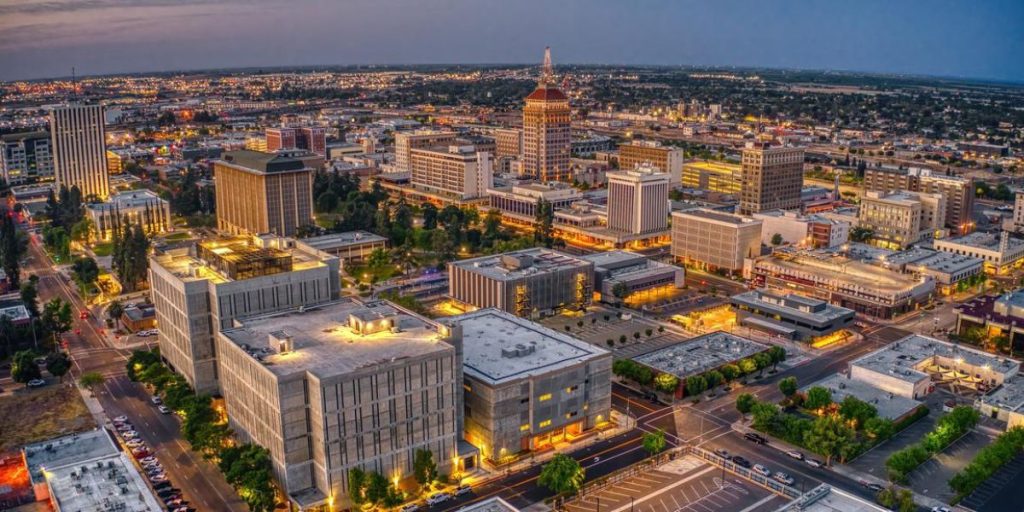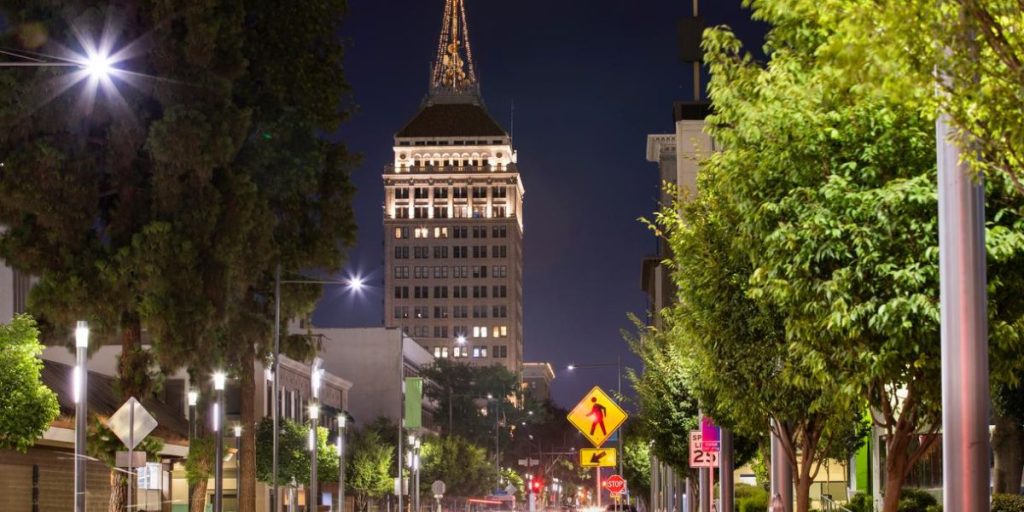The city of Fresno, which has over 500,000 citizens, is located in the heart of California. In addition to its high crime rate, the region is well-known for its agricultural and cultural diversity.
According to NeighborhoodScout, Fresno is one of the top ten most dangerous cities in the United States, with a crime rate 86% higher than the national average. Fresno has a 1 in 114 probability of becoming a victim of violent crime and a 1 in 28 risk of property crime.
In this piece, we will look at the top five riskiest neighborhoods in Fresno, as determined by AreaVibe’s crime statistics. These are the areas where you are more likely to become a victim of crime and have a higher crime rate per capita. The top five riskiest neighborhoods in Fresno are as follows:
Edison
This area, located in the southwestern portion of the city, has a crime rate of 138.91 per 1,000 persons, which is 165% more than the Fresno average. Edison is one of the least prosperous and most racially segregated areas in Fresno, with a median household income of $23,394 and a 44.6% poverty rate.

Roosevelt
The crime rate in this southeast district of the city is 121.81 per 1,000 persons, or 133% higher than the Fresno average. Roosevelt is a low-income neighborhood with a 37.8% poverty rate and a predominantly Hispanic population. The typical household income is $27,674.
West
This west side area has a crime rate of 115.64 per 1,000 residents, which is 121% more than the Fresno average. With a 34.4% poverty rate and a median household income of $29,921, West is a diverse and highly inhabited region.
Central
It has a crime rate of 111.26 per 1,000 residents, which is 115% higher than the Fresno average. Central has a median family income of $36,462 and a poverty rate of 28.5%, making it an ethnically and socioeconomically diverse neighborhood.
McLane
With 103.96 crimes per 1,000 residents, Fresno’s northeast district has a 103% higher crime rate than the city’s average. McLane is a predominantly Hispanic middle-class area with a median family income of $40,494 and a poverty rate of 25.2%.
Read More:
Efforts Needed to Reduce Crime in Fresno County

Community Policing and Engagement: Building positive relationships between the police and the community fosters trust and cooperation. Regular community meetings, neighborhood patrols, and outreach programs can contribute to a safer environment.
Investment in Youth Programs and Education: Focus on providing educational and recreational opportunities for young people. Investing in after-school programs, mentorship initiatives, and community centers can help keep youth engaged in positive activities, reducing the likelihood of involvement in criminal behavior.
Addressing Socioeconomic Factors: Target the root causes of crime by addressing socioeconomic factors such as poverty and unemployment. Support initiatives that create job opportunities, affordable housing, and access to mental health services. A more equitable distribution of resources can contribute to a reduction in crime rates.
Enhancing Community Watch Programs: Encourage the formation and active participation of neighborhood watch programs. Residents working together to keep an eye on their surroundings and report suspicious activities can serve as a deterrent to crime.
Crime Prevention Through Environmental Design (CPTED): Implement CPTED principles to design neighborhoods and public spaces in a way that discourages criminal activity. This involves improving lighting, maintaining clear sightlines, and securing vacant or abandoned properties. By enhancing the physical environment, the opportunity for criminal behavior can be reduced.
Also, Read: Delve into 5 Most Dangerous and Worst Neighborhoods in San Francisco, California
Conclusion
Despite its diverse agricultural and cultural setting, Fresno’s high crime rate concerns both residents and visitors. The data supplied reveals the city’s five riskiest neighborhoods, which are marked by high crime rates, low median earnings, and significant poverty.
Addressing the underlying challenges through targeted investments and community-driven projects may be critical to promoting safer and more equitable neighborhoods throughout Fresno.